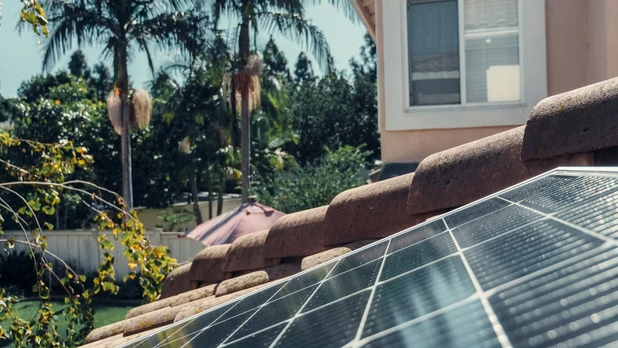Understanding Tax Rebates in California (CA)
California offers a range of tax rebates designed to benefit residents and support various financial and environmental goals. These rebates are part of the state’s commitment to providing financial relief while encouraging eco-friendly practices. Whether you are an individual taxpayer, a family, or a business owner, understanding how these rebates work is essential for maximizing your savings. Below, we’ll delve into the various types of rebates available, eligibility requirements, and how you can take advantage of them effectively.
The California tax rebate system is not just about financial relief. It reflects the state’s broader goals, such as promoting clean energy, supporting low-income households, and encouraging investments in renewable resources. From individual income tax rebates to credits for purchasing electric vehicles (EVs), the opportunities are vast. By staying informed, taxpayers can leverage these programs to reduce their financial burdens significantly.
This comprehensive guide will explore various categories of rebates, eligibility criteria, and the steps required to claim them. Additionally, we will discuss common pitfalls and how to avoid them, ensuring you get the maximum benefit. By the end of this article, you’ll have a clear understanding of how to optimize your rebate claims in California.
Types of California Tax Rebates
California offers several types of tax rebates tailored to different financial and environmental goals. These include rebates for income tax, electric vehicles, solar installations, and more. Each rebate has unique eligibility criteria and offers varying benefits depending on the individual or business's circumstances.
One popular type is the Middle-Class Tax Refund (MCTR), which provides direct payments to eligible taxpayers. The MCTR was introduced to mitigate the effects of inflation and rising living costs. Similarly, there are EV rebates designed to incentivize the adoption of clean energy vehicles. These programs not only reduce the initial cost of EVs but also contribute to California’s climate goals.
Other notable rebates include the California Solar Initiative, aimed at encouraging the use of solar energy, and property tax rebates for homeowners who improve energy efficiency in their properties. For businesses, there are additional incentives related to renewable energy investments and waste reduction initiatives.
| Rebate Type | Eligibility | Maximum Benefit (USD) |
|---|---|---|
| Middle-Class Tax Refund | Households earning below $500,000 | $1,050 |
| Electric Vehicle (EV) Rebate | Purchase or lease of a new EV | $7,500 |
| Solar Installation Incentives | Homeowners installing solar panels | $5,000 |
| Energy Efficiency Tax Credit | Home energy upgrades | $2,000 |
Eligibility Criteria for California Tax Rebates
To qualify for California’s tax rebates, you must meet specific criteria, which vary depending on the rebate type. For example, income-based rebates like the MCTR consider annual household income and filing status. Individuals earning less than $250,000 or couples earning below $500,000 generally qualify for these payments.
For property-related rebates, such as energy efficiency credits, eligibility often depends on ownership and the nature of improvements made. Installing solar panels or upgrading insulation to meet state energy standards are common examples. Similarly, rebates for electric vehicles require proof of purchase or lease of a qualifying model.
Businesses seeking tax credits must demonstrate compliance with specific state regulations, such as using approved energy-efficient equipment or adopting sustainable practices. Each program outlines its requirements, so it’s crucial to review the details carefully before applying.
- Review Eligibility Requirements: Ensure your income, purchase, or installation qualifies under the rebate program guidelines.
- Gather Documentation: Collect receipts, proof of purchase, and other necessary paperwork to support your claim.
- Submit Applications Promptly: Most rebate programs have deadlines, so timely submission is crucial.
- Track Your Application: Use online portals or contact rebate offices to check the status of your claim.
- Consult a Tax Professional: Seek expert advice if you’re unsure about specific program details or requirements.
How to Claim Your California Tax Rebates
Claiming tax rebates in California involves a straightforward but detailed process. First, identify the programs you are eligible for based on your activities, purchases, or financial situation. For instance, if you recently purchased an EV, you could qualify for both federal and state rebates, maximizing your benefits.
Once eligibility is confirmed, complete the application forms provided by the respective program. Most applications require detailed information about the rebate-related activity, along with proof of purchase or installation. In some cases, submitting your claim online may expedite processing times.
After submitting your application, monitor its progress through official channels. It’s essential to respond promptly to any additional information requests. Proper documentation and attention to deadlines are key factors in ensuring successful claims.
- Application Forms: These can typically be found on official state websites or through program-specific portals.
- Proof of Eligibility: Include receipts, certifications, and any required identification documents.
- Submission Deadlines: Missing a deadline could result in forfeiture of your rebate.
- Payment Timelines: Understand when to expect your rebate payment and plan accordingly.
- Support Resources: Many programs offer helplines or FAQs to assist applicants.
Conclusion
California’s tax rebate programs are a valuable resource for residents and businesses, offering financial relief and promoting sustainable practices. By understanding the different types of rebates, meeting eligibility criteria, and following the correct application procedures, you can take full advantage of these benefits.
Whether you’re an individual looking to offset your income taxes or a business aiming to reduce operational costs, these rebates provide significant opportunities. Staying informed about program updates and changes is essential, as the state frequently introduces new incentives to align with policy goals.
In conclusion, leveraging California’s tax rebate programs can lead to substantial savings and contribute to broader environmental and economic objectives. Take the time to explore the options available to you, and don’t hesitate to seek professional advice if needed. With careful planning and execution, you can maximize your benefits and support California’s vision for a sustainable future.
Evaluation of IQTaxHub
Pros
- Provides financial relief
- Encourages eco-friendly purchases
- Boosts local economy
Cons
- Complex application process
- Limited rebate availability
- Varies by income level

Last modified: November 15, 2024 at 12:39 p.m.

